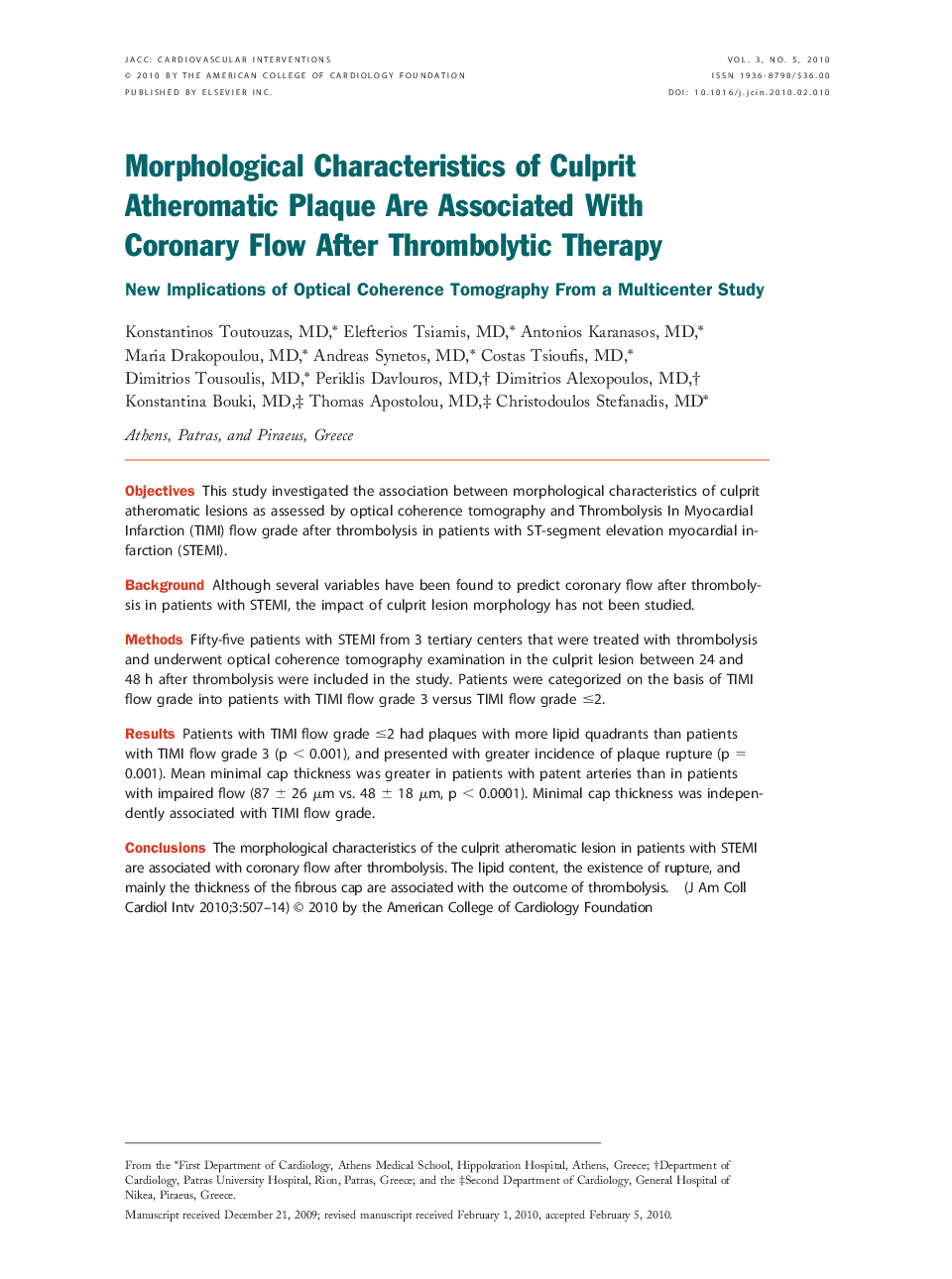| Article ID | Journal | Published Year | Pages | File Type |
|---|---|---|---|---|
| 2941299 | JACC: Cardiovascular Interventions | 2010 | 8 Pages |
ObjectivesThis study investigated the association between morphological characteristics of culprit atheromatic lesions as assessed by optical coherence tomography and Thrombolysis In Myocardial Infarction (TIMI) flow grade after thrombolysis in patients with ST-segment elevation myocardial infarction (STEMI).BackgroundAlthough several variables have been found to predict coronary flow after thrombolysis in patients with STEMI, the impact of culprit lesion morphology has not been studied.MethodsFifty-five patients with STEMI from 3 tertiary centers that were treated with thrombolysis and underwent optical coherence tomography examination in the culprit lesion between 24 and 48 h after thrombolysis were included in the study. Patients were categorized on the basis of TIMI flow grade into patients with TIMI flow grade 3 versus TIMI flow grade ≤2.ResultsPatients with TIMI flow grade ≤2 had plaques with more lipid quadrants than patients with TIMI flow grade 3 (p < 0.001), and presented with greater incidence of plaque rupture (p = 0.001). Mean minimal cap thickness was greater in patients with patent arteries than in patients with impaired flow (87 ± 26 μm vs. 48 ± 18 μm, p < 0.0001). Minimal cap thickness was independently associated with TIMI flow grade.ConclusionsThe morphological characteristics of the culprit atheromatic lesion in patients with STEMI are associated with coronary flow after thrombolysis. The lipid content, the existence of rupture, and mainly the thickness of the fibrous cap are associated with the outcome of thrombolysis.
